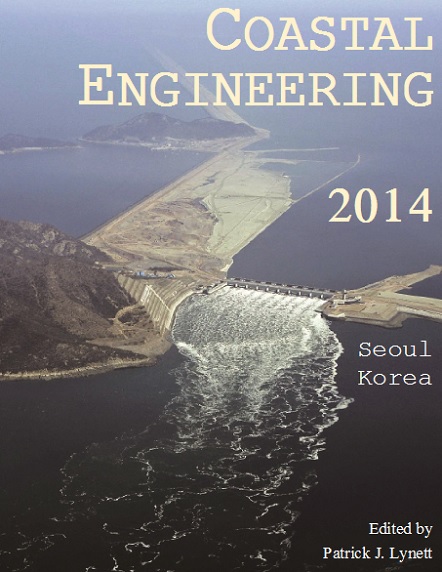Abstract
Existence of the estuarine turbidity maximum (ETM) zone is ubiquitous in partially mixed estuaries. It is characterized by high suspended sediment concentration. The position of the TM usually corresponds to the head of the salt instruction. In the Yangtze Estuary, the ETM zone is extremely large in spatial scale, spreading over the entire mouth zone downstream the South Branch and inside the 10 m isobaths. The ETM is aslo accompanied by a board shallow area (basically around 6 m) in the mouth zone, namely the mouth bars. The presence of the mouth bars hampers the navigation significantly. Thus extensive engineering works are implemented to achieve deeper water depth with the help of dredging activities in the North Passage in the Yangtze Estuary. However after the completion of the engineering works, high siltation appears in the middle segment of the North Passage. The hypothesis is that the location of high siltation (expressed in the morphology) falls in the range of ETM zone modified by the completion of the engineering works. The formation and development of ETM and consequent morphodynamic development is focused on.A three-dimensional z-layer model Delft3D is employed. This study clearly shows that salinity gradients can be better simulated using the z-layer model, where the stratification at the upper limits of the salt wedge is better resolved. Afterwards, the consequent morphological changes are qualitatively demonstrated. The study shows the capability of this z-layer model to exploit the mechanism of generation and development of ETM, thus to explain the complex phenomenon of the high siltation in the North Passage of Yangtze estuaryReferences
Burchard, H., Baumert, H., 1998. The formation of estuarine turbidity maxima due to density effects in the salt wedge. A hydrodynamic process study. Journal of Physical Oceanography 28 (2), 309-320.
Pan Ding'an, Shen Huanting, Mao Zhichang(1999): Formation mechanism and features of the Turbidity Maximum in the Changjiang River Estuary, Acta Oceanologica Sinica, vol. 21, 62-67.
Shen Huanting, He songling(2001): A study of the Turbidity Maximum in the Changjiang Estuary, Acta Geographic Sinica, vol. 47, 472-479.
CHEN Zhi-chang, and GU Pei-yu, and ZHU Yuan-sheng, and ZHAO Xiao-dong, 1995. Research on deep water channel of Yangze estuary. Hydro-Science and Engineering. 1995(3), 210-220.
CHEN Zhi-chang, and LE, Jia-zuan, 2005. Regulation principle of Yangze River estuary deep channel. Hydro-Science and Engineering. 2005(1), 1-7.
HAN, Yu-fang, 2003, The Scouring Processes of Riverbed around Spur Dikes. Nanjing, 65-73.
LE, Jia-zuan, and CHEN Zhi-chang, 2005. Selection and training principle of deep channel in the Yangze River estuary. Hydro-Science and Engineering. 2005(2), 1-8.

